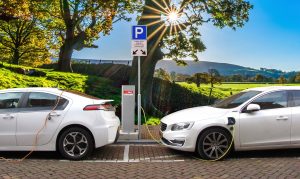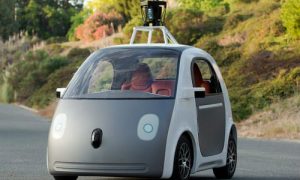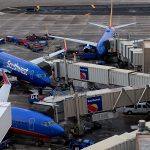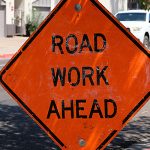On Thursday, Tesla Motors announced it had selected a site outside Reno, Nevada as the first place where it had broken ground for a $5 billion factory to build battery packs for its future cars.
That doesn’t mean Reno will get to build the actual factory, however. It only means that it was tapped on the shoulder by the company to prove that it’s able to build the plant, which is known as the Gigafactory.
Tesla is also considering four other states — Arizona, California, New Mexico and Texas — as possible sites for the 10 million square-foot factory. That is five times bigger than the average new-car assembly plant. Tesla wants all the preparation work finished at several locations, including permits, ground clearing and incentives, before it decides who wins.
Tesla’s ambitious plan is the center of attention in the economic development world, and that has made the story a challenge across a number of beats. From San Antonio to San Jose, Phoenix to Albuquerque, news organizations are tackling the Gigafactory in various ways.
Some reporters see it as an investment story. Political reporters see it as demands for perks from state and local governments. Others, especially tech bloggers, are mainly interested in the lithium-ion batteries that the plant will build. Automotive reporters are looking at the Model 3, the small, moderately priced electric car that will carry the Gigafactory’s batteries.
That adds up to challenges for everyone who is covering Tesla’s Gigafactory. The biggest problem: State and local officials signed disclosure agreements, preventing them from discussing the plant. Tesla also is being very tight-lipped, leaving official pronouncements to its billionaire CEO, Elon Musk. That has made any public statements by Musk, like Thursday’s second-quarter earnings report, as the primary way to get news.
But there are methods journalists can use to gather string on the Gigafactory. Here are some examples of how various news organizations have reported it.
Show Me The Permits.
On June 9, Jason Hidalgo and Anjeanette Damon of the Reno Gazette-Journal reported that a “clear and grub” permit had been obtained for “a sizable project at the Reno Tahoe Industrial Center (TRI).” In fact, that permit was the first tangible clue that Tesla in fact had chosen the location as its initial Gigafactory site.
According to the reporters, the permit was pulled on May 22, and allows work to continue until November. Tesla has said it expects to make its decision by year end, which means Reno can keep sprucing up the site as the company makes up its mind.
Journalists don’t always get as lucky as Hidalgo and Damon, who tweeted a copy of the permit on Thursday. But if a major company is going to tear up ground in your backyard, they generally have to have permission to do so. That means searching city, county and state records for permits, environmental records, and deeds.
Go And See.
The Japanese phrase, “genchi genbutsu” translates to “go and see” and that’s exactly what some writers did, both digitally and physically. In May, TeslaMondo pulled an aerial photo from Tesla’s website, depicting the layout of the Gigafactory, and compared it with a photo of the Reno Stead Airport. They seemed to match up, and while that spot did not get the factory, the circumstances pointed to Reno.
Other bloggers got in their vehicles and went hunting, like Walt Parkman, a Tesla Mondo reader who drove right up to a security booth at the site, which happened to have a sign reading, “Project Tiger.” You can see photos of the surrounding area on Transport Evolved, which looks at the future of transportation.
To be sure, personal exploration doesn’t always pan out. For one thing, security might boot you off the property.
But I’ve done this myself. A few years back, I took a drive to York Township, Mich., south of Ann Arbor, to scope out a spot where Toyota was rumored to be building a new safety and design center. While I couldn’t get in, I saw ground-clearing activity, and filled up a couple of notebook pages. Even if you don’t get a scoop, you can pick up valuable color for use in future stories.
Bar Talk.
Okay, I don’t mean for you to actually go to a bar and eavesdrop on people. I use the phrase “bar talk” for the kind of tidbits and speculation you can get from people who might be in the loop on economic development projects. In Tesla’s case, those non-disclosure agreements keep the principles from talking. In Texas, for example, Gov. Rick Perry is the official negotiator with Tesla, and you aren’t likely to get him to spill information.
But, one thing I’ve learned about the economic development world is that there are myriad places to look for information. Lawyers, commercial real estate agents, property managers, restaurant owners (because meetings have to take place somewhere, and people need to eat) can all be useful sources.
And, sometimes, someone will say something useful. When Hidalgo and Damon discovered the clear and grub permit, they nabbed quotes from Lance Gilman, who was developing the TRI site. In retrospect, Gilman gave them a gold mine of information.
“We have finished a superpad to accommodate 5 million square feet. We moved several million cubic yards of material,” Gilman said of the work at the site, largely done in less than four weeks’ time.
He added, “There’s nowhere else in the world you can get a project up as fast as here. Our risk is zero. Tesla can start pouring concrete next week if they so desire,” he said. Essentially, the story was right there in plain sight.
Musk, Tesla’s CEO, said Thursday that the company won’t start pouring concrete until it has finalized the details of which state wins. But if you find a recently prepared spot in a Southwestern state that is big enough for the Tesla Gigafactory, you might want to start taking pictures and notes.










